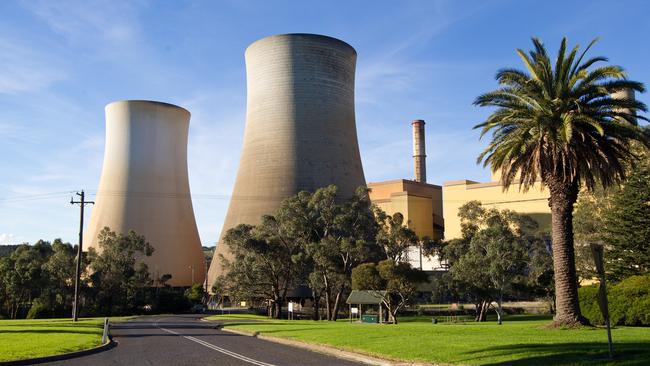Yallourn emissions will decide future of EnergyAustralia’s power plant
High renewable targets and looming changes to emission rules add to pressure that could force the ageing Yallourn plant to close early.

The owner of Victoria’s under threat Yallourn coal plant, EnergyAustralia, said the power station can generate at a quarter of the cost of black coal facilities in NSW, with Trevor St Baker’s Vales Point more at risk of early closure than its Latrobe Valley competitor.
The energy giant – one of the country’s “big three” electricity retailers – faces an uncertain outlook for Yallourn, with the state’s high renewable targets and looming changes to emission targets adding to pressures that could force the plant to close earlier than its 2032 retirement date.
Uncertainty over the future of the Portland aluminium smelter, the state’s single biggest power user, has also cast a cloud over Yallourn.
But EnergyAustralia said Yallourn has delivered “great returns” due to its short-run costs of less than $10 a megawatt hour, principally the cost of its brown-coal fuel.
“It’s in the single digits,” EnergyAustralia executive for markets Ross Edwards told a UBS briefing.
Yallourn’s short-run costs - as opposed to the overall cost of operating the plant - “would be a quarter of the cost of black coal.”
Mr Edwards agreed with a comment by UBS analyst Tom Allen that older coal stations including Vales Point, due to close in 2029, are more likely to face an accelerated closure than the Victorian coal plant.
The future of Yallourn is “something we’ll continue to review but I look at the market and when we look at closures those older black coal plants are quite strong candidates”.
Origin Energy on Wednesday forecast an acceleration in the switch to renewables from coal, with weak electricity demand from COVID-19 challenging the role of the fossil fuel in Australia’s power mix.
Australia’s coal power stations are increasingly becoming uneconomic and operating at razor thin margins, amid big falls in wholesale power prices as more renewables enter the electricity grid, the nation’s energy tsar Kerry Schott has warned.
Origin – which operates the nation’s largest coal plant Eraring in NSW – said the pandemic had laid bare the solar “duck curve” phenomenon where renewables beat coal on price during the day.
“I think COVID-19 is accelerating prior trends even more and accelerating the transition in a number of respects,” Origin chief executive Frank Calabria told the Stanford Global Energy Dialogues forum on Wednesday. “With the weakening in demand, I think it’s accentuating the duck curve in the middle of the day and accelerating the challenge for coal to operate.”
Wholesale power prices have fallen steeply so far this year and weaker demand has changed the way generators bid supply into the grid. Origin saw electricity demand fall by up to 20 per cent for some customers during the COVID-19 shutdown, which has since eased to a 5 per cent drop in demand in August.
“The price formation is changing and as a result of that I believe it’s going to bring those trends on faster,” Mr Calabria said.
Black coal output fell by a significant 1148 megawatts in the June quarter from a year earlier, with Eraring recording its latest second quarter generation since 2013 as it was undercut by solar, wind and brown coal-fired supplies, data from the Australian Energy Market Operator shows.
That meant Eraring was operating close to minimum generation levels of just 180MW – less than 10 per cent of capacity – more frequently due to low spot prices.
Average electricity spot prices have halved from a year ago to between $40 to $45 a megawatt hour range in most states, and at sub-$40 price levels are starting to approach break-even for black coal generators.
Coal accounts for about 70 per cent of electricity in the power grid but AEMO forecasts 63 per cent, or 15 gigawatts, of the country’s coal fired generation will retire by 2040.
AGL Energy, the nation’s biggest carbon polluter, on Wednesday received a shareholder resolution demanding a faster exit from coal-fired power plants.
The Australasian Centre for Corporate Responsibility said the power giant accounts for 8.1 per cent of Australia‘s emissions and was on a “collision course” with both Paris climate targets and investors under its current plans, urging shareholders to vote for the proposal at its annual general meeting on October 7.
AGL’s Bayswater coal station in NSW is due to run until 2035, with its Loy Yang A facility in Victoria not set to close until 2048.

